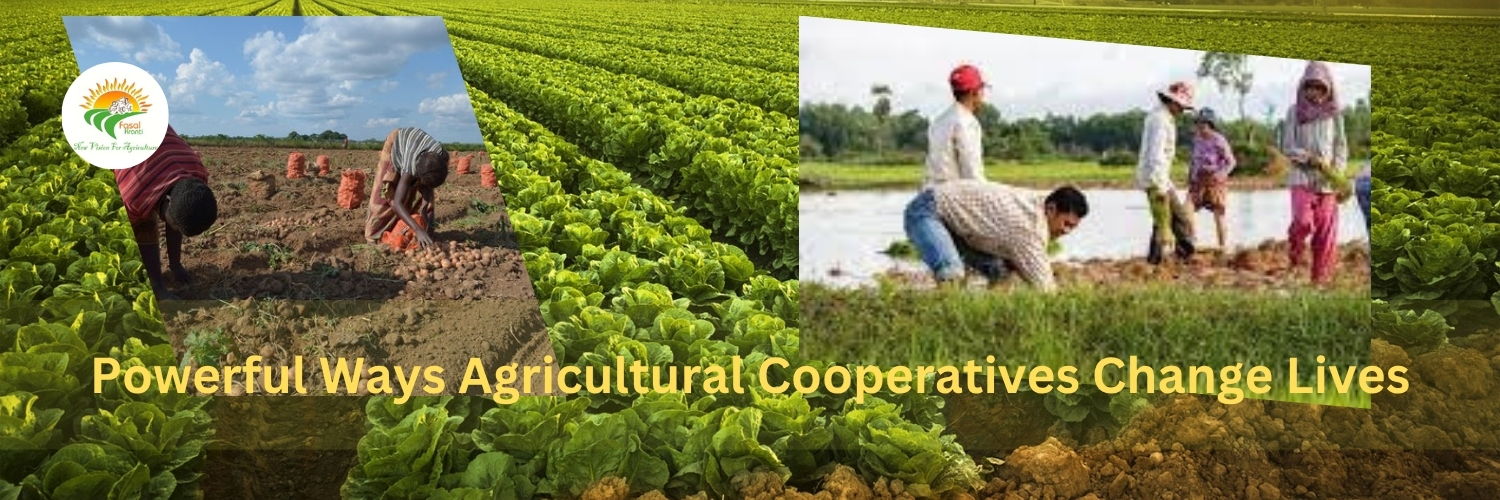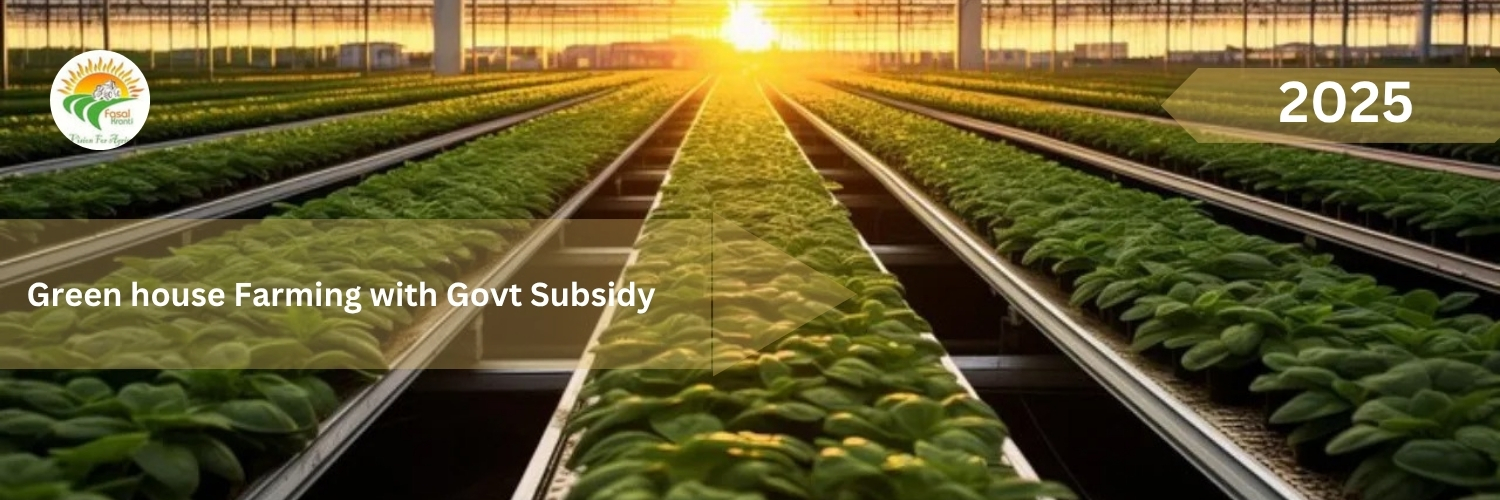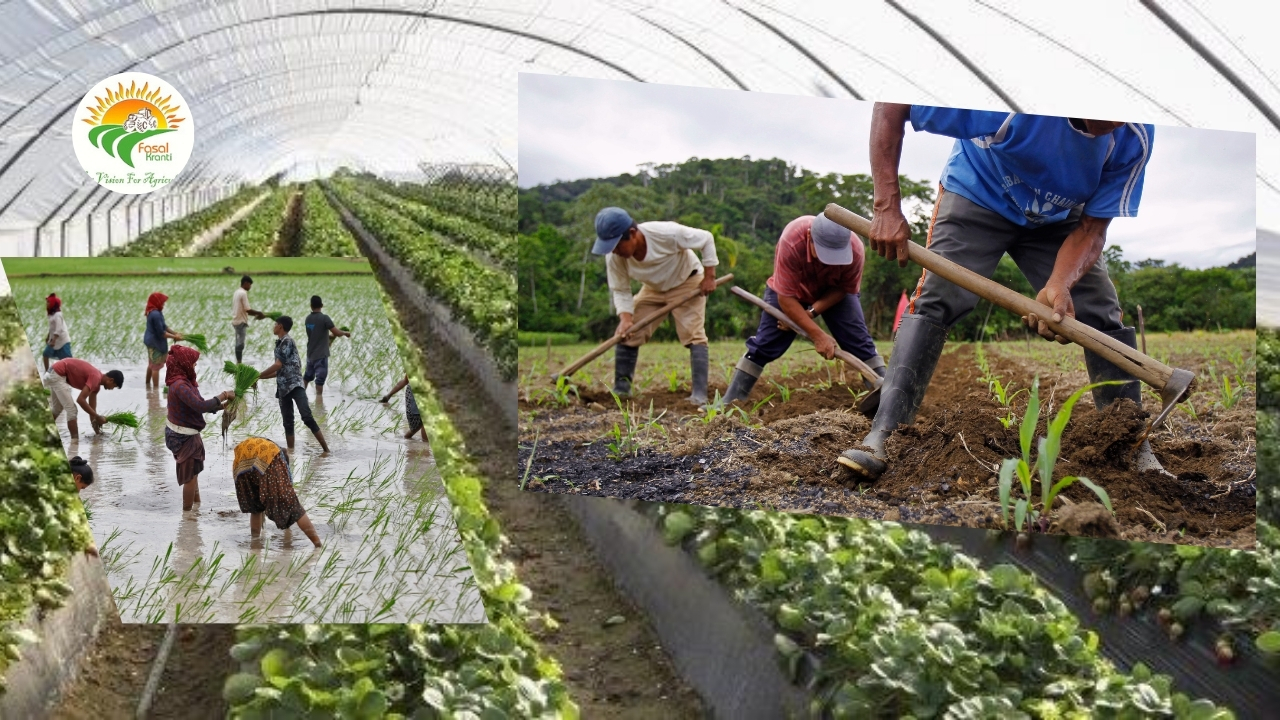7 Powerful Ways Agricultural Cooperatives Change Lives

Strong 8k brings an ultra-HD IPTV experience to your living room and your pocket.
An Agricultural Cooperative is a group of farmers who come together to support one another and grow stronger as a team. Instead of working alone, they pool their resources like money, tools, knowledge, and crops to reduce risks and improve their chances of success. These cooperatives help members get better prices, buy supplies at lower costs, and access training and market opportunities that would be hard to reach individually. Built as a solution to rural poverty and the struggles of small-scale farming, an Agricultural Cooperative gives farmers a voice, a vote, and a support system. Today, millions of farmers around the world are changing their lives through this model. It brings not only financial growth but also fairness, shared responsibility, and stronger rural communities.
1. Empowering Small-Scale Farmers
Access to Shared Tools and Inputs
Small-scale farmers often struggle with buying expensive farm inputs like seeds, fertilizer, pesticides, and equipment. On their own, these costs can be too high, forcing many to settle for low-quality products or take on debt. But in an Agricultural Cooperative, farmers join forces to buy these items in large quantities at wholesale prices. This means each member pays less and gets more value. Not only that, cooperatives make sure the inputs are genuine and of good quality, which protects crops and boosts productivity. This group buying approach helps reduce the financial burden and gives farmers more peace of mind when preparing for each planting season.
Stronger Voice in the Market
Selling farm produce alone can be tough. Local traders or middlemen often offer very low prices, knowing small farmers don’t have much choice. But cooperatives change that. By pooling harvests together, members can sell in larger batches that attract bigger buyers like supermarkets, restaurants, or even exporters. This gives farmers more say when negotiating prices and payment terms. Together, they can set fairer prices, cut out middlemen, and gain respect in the market. With a united voice, farmers are no longer price takers they become price influencers.
2. Boosting Economic Stability in Rural Areas
Earning a Steady Income
Fluctuating prices make farming unpredictable. One season, a crop might bring good money; the next, it could barely cover costs. Agricultural cooperatives help stabilize this uncertainty. When farmers sell together, they can access better markets and negotiate contracts that guarantee fair and stable prices over time. This reliable income stream helps farmers manage household budgets, invest in farm improvements, and save for the future. It also means they can support their children’s schooling and healthcare without worry.
Safety Nets during Tough Times
Farming is risky. Droughts, floods, pests, or diseases can destroy crops overnight. Cooperatives understand this and often create safety nets for members. These include crop insurance programs that reimburse losses and emergency funds or soft loans to help during hard times. When one member struggles, the cooperative steps in to help them get back on their feet whether that’s through financial aid, input supply, or moral support. This shared safety system makes farming more secure and less stressful.
3. Enhancing Food Security and Sustainability
Encouraging Organic and Local Practices
Agricultural cooperatives often teach and encourage members to grow food in ways that are healthier for people and the planet. This includes reducing chemical use, using compost and natural fertilizers, practicing crop rotation, and planting diverse crops. Cooperatives may also help members sell their produce locally, which cuts transport costs and keeps food fresh. These eco-friendly practices improve soil health, protect water sources, and provide communities with safe, nutritious food.
Cutting Down on Waste
Too much food is often lost after harvest due to poor planning, lack of storage, or selling delays. Cooperatives help farmers plan what to grow based on market needs so they don’t overproduce. They also provide shared storage facilities and transport solutions that reduce spoilage. By producing just the right amount and preserving what’s harvested, more food reaches families, prices remain steady, and land is used wisely.
4. Improving Access to Agricultural Education
Learning New Skills
Farmers need to keep learning to keep up with changing weather, pests, and market trends. Cooperatives organize hands-on training where members learn about things like using natural pest control, rotating crops to keep the soil healthy, and managing farm finances. These trainings are often free or low-cost, and taught by experts or experienced members. By learning together, farmers improve their yields and make smarter decisions for their farms.
Using Modern Farming Tools
Technology can make farming easier and more productive. But many small farmers can’t access or understand these tools alone. Cooperatives help bridge that gap by introducing members to innovations like drip irrigation, mobile weather updates, GPS-based planting, and soil testing kits. Farmers can see demonstrations, share equipment, and learn how to use these tools effectively. This boosts output, cuts waste, and helps farmers grow smarter, not just harder.
5. Fostering Social Inclusion and Equality
Giving Everyone a Voice
Agricultural cooperatives welcome farmers of all backgrounds and give them equal say in decisions. Women, young people, and disadvantaged groups are often encouraged to take on leadership roles. This inclusivity not only makes cooperatives stronger but also gives everyone a chance to shape the future of their community. When everyone’s voice is heard, better decisions are made.
Building Trust and Teamwork
Working together in a cooperative builds more than just profits it builds friendships, trust, and a strong support network. When farmers help each other solve problems, share ideas, and celebrate success, communities become more united. This teamwork creates a safety net not just for money, but for emotional and social well-being too.
6. Driving Environmental Stewardship
Promoting Green Practices
Cooperatives often promote eco-friendly methods that keep the environment clean and farms productive. This includes planting trees to stop soil erosion, using natural fertilizers, and reducing harmful chemical use. These practices are taught through group training and implemented collectively, making a bigger positive impact.
Saving Water and Soil
Water is life on a farm, and soil is its foundation. Cooperatives help farmers use drip irrigation to save water, and teach ways to protect soil from erosion, such as planting cover crops or using mulch. These small changes keep farms healthy and productive for the next generation.
7. Facilitating Better Market Access
Opening New Sales Channels
Through cooperatives, farmers can sell to larger buyers who need consistent supply like grocery stores, food processors, and even export companies. The cooperative handles packaging, quality checks, and deliveries, which individual farmers may struggle to manage. This opens doors to new income streams and long-term partnerships.
Helping Farmers Compete Globally
With guidance from the cooperative, farmers learn about international standards for food safety, packaging, and delivery. When these standards are met, products can be sold in foreign markets, bringing higher prices and global recognition. This turns even a small village farm into a player in the global food chain.
Real-Life Success Stories
In Kenya, dairy cooperatives have helped thousands of farmers by providing training, access to refrigeration, and fair pricing, turning milk into a reliable source of income. In India, the famous Amul Cooperative has empowered millions especially women by turning small-scale dairy farming into a profitable, large-scale enterprise. These stories show that when farmers work together, big change is possible.
Challenges Faced by Agricultural Cooperatives
Roadblocks to Success
Even strong cooperatives face challenges like poor leadership, lack of funds, and outdated technology. Sometimes, internal disputes or poor planning can slow things down.
Ways to Move Forward
Cooperatives can overcome these issues with better training, support from governments, and partnerships with tech companies and NGOs. Transparency, unity, and innovation are key to long-term success.
The Future of Agricultural Cooperatives
What’s Next?
The future is digital. Many cooperatives are using mobile apps, block chain, and online banking to improve how they work. These tools bring speed, fairness, and reach to cooperative systems.
Support from Policy Makers
For cooperatives to thrive, they need supportive laws, grants, and access to education. Governments and international donors have a major role to play in expanding these models.
FAQs
1. What makes a cooperative successful?
Strong leadership, member involvement, and trust are essential for success.
2. How do cooperatives help farmers?
They provide cheaper inputs, better prices, training, and support during tough times.
3. Who can join a cooperative?
Any farmer willing to contribute, participate, and follow the rules can join.
4. Are agricultural cooperatives profitable?
Yes! Many members see increased income and better farm performance.
5. What’s the difference between cooperatives and companies?
Cooperatives are owned and run by farmers themselves, not outside shareholders.
6. Can cooperatives survive in the long term?
Absolutely. Their focus on community and sustainability makes them future-ready.
Remarks
An Agricultural Cooperative is much more than a farming group it’s a lifeline for farmers. By working together, sharing knowledge, and supporting one another, farmers can transform not just their farms but their futures. These cooperatives are bringing hope, income, and equality to rural communities worldwide. As the world faces climate change and food insecurity, the cooperative model stands out as a smart, inclusive, and sustainable solution.
Note: IndiBlogHub features both user-submitted and editorial content. We do not verify third-party contributions. Read our Disclaimer and Privacy Policyfor details.






